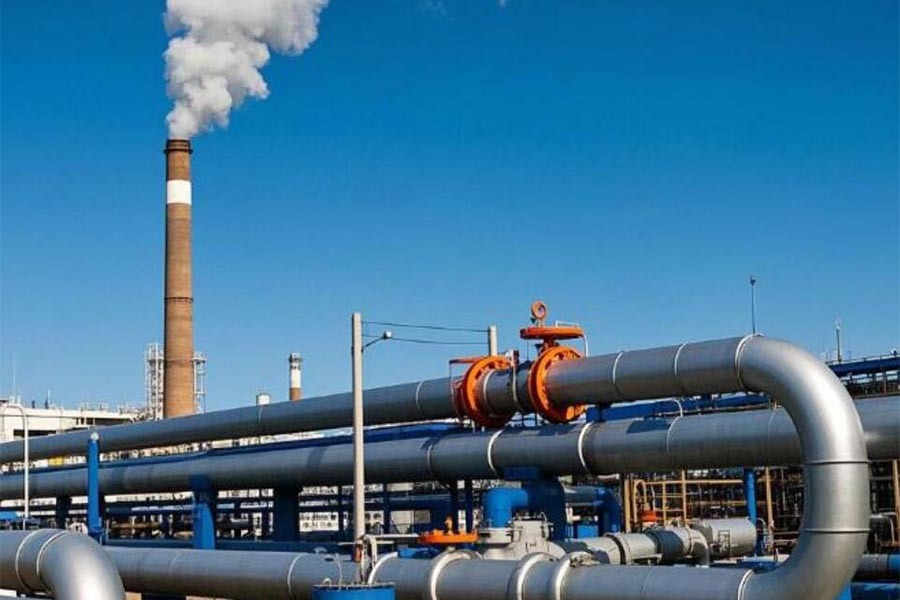Difference between tankers and chemical tankers
Release time:
2025-04-27
Different oil products have different transportation requirements, and it is crucial to choose the right transportation method. Hope this article can help you better understand the various oil transportation methods!
Different oils require different methods of transportation and can't be shipped on just any boat. Let's take a look at how various oils should be transported!
Crude oil: transportation of black gold
First of all, we have to talk about crude oil. Crude oil, also known as unprocessed petroleum, is a dark brown viscous liquid with green fluorescence, but also with a special smell. This “black gold” is the heart of energy and requires special transportation. Crude oil is classified as oil under the International Convention for the Prevention of Pollution from Ships (MARPOL Convention), so it has to be transported on special crude oil tankers.
Gasoline: The Shiny Fuel
Next up is gasoline. Gasoline is fractionally distilled from petroleum and is highly volatile and flammable. It has the appearance of a clear liquid and can be used as a fuel. Again, gasoline is classified as an oil under the MARPOL convention, so it also has to be transported by tanker. Note, however, that some gasoline has a flash point of less than 60°C. This type of gasoline requires special care when transported on inland waterways.
Diesel fuel: the source of power
Diesel oil is also a kind of petroleum product, and its flash point is usually below 60℃, so it needs special care when being transported on inland waterways. According to the latest Catalog of Hazardous Chemicals, diesel has been classified as a hazardous chemical, so it needs to be transported by chemical liquid cargo ships.
Lubricating oil: a lubricant for machinery
Lubricating oil is fractionated from petroleum and has many functions such as lubrication, cooling and rust prevention. It is mainly used for lubrication of various machinery and vehicles. Lubricating oil is also classified as oil under the MARPOL convention, so it needs to be transported by tanker.
Fuel Oil: Utilization of Heavy Oil
Fuel oil is a heavy residue from petroleum processing that is highly viscous and contains non-hydrocarbon compounds, gums and asphaltenes. Fuel oil is also classified as an oil under the MARPOL convention, so it needs to be transported by tanker. Note, however, that the transportation of fuel oil requires special equipment and techniques.
Naphtha: transportation of light oils
Naphtha is a light oil product that is mainly used as a chemical raw material. Although it is not classified as a hazardous chemical, naphtha is also classified as an oil according to the MARPOL convention, so it needs to be transported by tanker. In addition, naphtha has a common name, crude gasoline, and is a non-persistent oil.
Aviation Kerosene: The “Blood” of an Aircraft
Aviation kerosene is the main fuel for airplanes. It is a clear liquid made from a blend of straight-run fractions, hydrocracked and hydrofined components. Jet fuel is also classified as an oil under the MARPOL Convention, so it needs to be transported by tanker. However, it should be noted that the flammable nature of jet fuel requires special care during transportation.
Bitumen: the black “gold”
Bitumen is a mixture of non-hydrocarbons and hydrocarbons, mainly asphaltenes and gums, which can be produced naturally or in crude oil processing. It has the appearance of a black liquid, semi-solid or solid and has good adhesive, water and corrosion resistance. Although not a hazardous chemical, bitumen is also classified as an oil under the MARPOL convention, so it needs to be transported by tanker.
Solvent oils: flammable chemical solvents
Solvent oil, one of the five major petroleum products, is a complex mixture that is highly flammable and explosive. It has the appearance of a colorless or light yellow liquid, insoluble in water but soluble in most organic solvents. Solvent oils are also classified as oils under the MARPOL convention, so they need to be transported by tanker.
Base oils: the essence of refining
Base oils are produced by refining crude oil, which can be refined in a heating process. By using hydrogenation technology, sulfur and aromatics can be removed using hydrogen at high pressure, resulting in extremely pure base oils. Base oils are also classified as oils under the MARPOL convention, so they need to be transported by tanker.
Coal tar: a complex mixture
Coal tar is a complex mixture of highly aromatic hydrocarbons, consisting mainly of polycyclic and thick cyclic compounds with or without side chains and heterocyclic compounds containing oxygen, sulfur and nitrogen. It also contains small amounts of aliphatic, naphthenic and unsaturated hydrocarbons, as well as coal dust, coke dust and pyrolysis char. According to the MARPOL convention, coal tar, although not a hazardous chemical, needs to be transported in chemical liquid cargo ships due to its flammable properties.
Biodiesel: The Green Alternative
Biodiesel is a diesel alternative made from renewable resources and does not fall under the category of diesel. Although biodiesel is not classified as a hazardous chemical (in BC Chapter 17), it falls within the scope of transportation by chemical liquid cargo ships. Therefore, biodiesel needs to be transported by chemical liquid cargo ships.
Transportation Precautions
Tankers carrying bulk oil should have double hull structure. The oil pollution prevention certificate of inland oil tankers indicates (flash point >60℃) that oils with flash point <60℃ shall not be carried. Domestic trade bulk gasoline should be transported by tankers suitable for carrying oil with flash point below 60℃. Oil products suitable for foreign trade tankers can check the international oil pollution prevention certificate. The suitable scope of domestic tankers can be confirmed through other ways.
Summarize
Different oil products have different transportation requirements, and it is crucial to choose the right transportation method. Hope this article can help you better understand the various oil transportation methods!
More information




